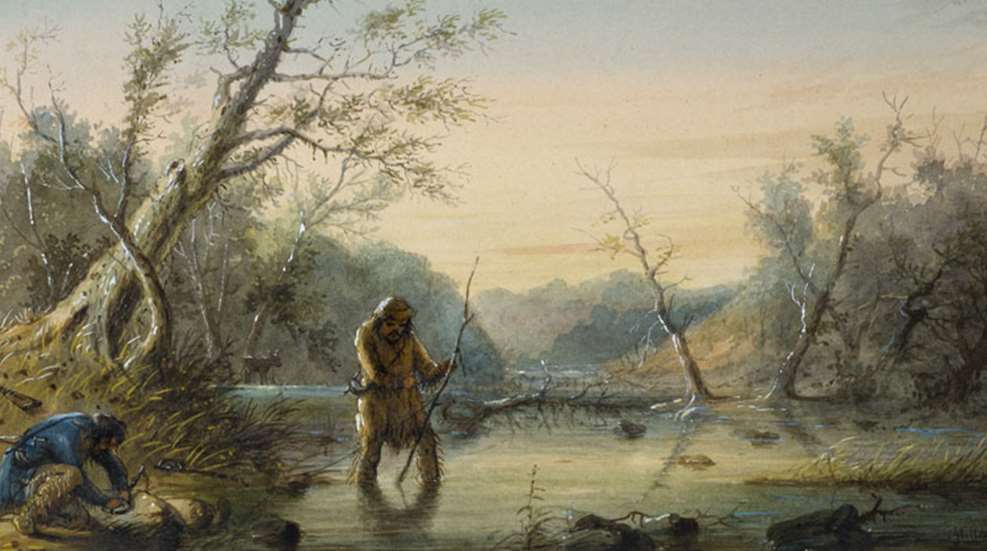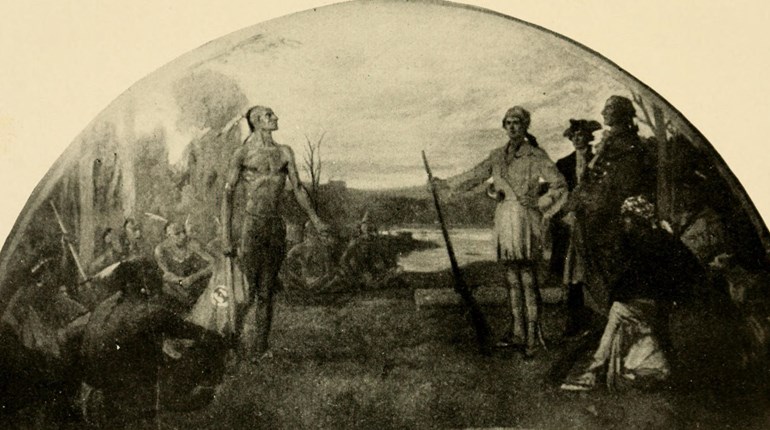
The 1800s in American history was the century of the “mountain man.” Roaming west of the Mississippi onto the Great Plains and eventually the Rocky Mountains and beyond, these young men, in the prime of life, were strong, steady of hand and sharp of eye. But what they lacked was knowledge and experience in the West—an amazingly beautiful yet unforgiving frontier that allowed few if any mistakes. They were forced to develop new skills and adapt to a new environment quickly. It was a steep learning curve, and few lived to old age, and many of the lessons they learned are still applicable today while others are almost lost to the ages…almost.
Go Properly Armed
One of the first changes these men made was to increase their firepower. The Kentucky long rifles they initially carried—most of which had been built in Pennsylvania gunshops—were simply not suited to the larger game and longer shooting distances of the West. Their .40 to .45-caliber flintlocks that had served them so well hunting whitetail deer and black bears in the eastern woodlands were no match for the bison, elk, and grizzly bears west of the Divide.
Consequently, .50- to .55-caliber guns quickly became popular, and the most sought after was the heavy Hawken rifle produced by Jacob Hawken and his younger brother, Samuel, of St. Louis. Once properly armed, a hunter, trapper and explorer walked the wilderness trails a little more confidently.
Go Lightly Laden
John Colter is considered by many to be the first mountain man. A member of the successful Lewis and Clark Expedition of 1804, Colter chose to remain in the Rocky Mountains to trap beaver rather than return to civilization with the Corps of Discovery. He wisely befriended the Crow nation of Native Americans, living with them and learning their survival skills, passed down from generation to generation over millennia. In 1837, the writer Washington Irving wrote, “You cannot pay a free trapper a greater compliment than to persuade him you have mistaken him for an Indian brave.”
One of the many skills the Crow taught Colter was how to travel light and live off the land during any season of the year. For instance, from the fall of 1807 to the spring of 1808 Colter explored 1,000 miles of wilderness on foot, the first white man to pass through what one day would become Yellowstone and Grand Teton national parks. And he did it alone, much of it during the dead of winter, carrying a pack that weighed just 30 pounds.
Go With Good Intelligence
The Indians also taught the mountain men how to detect the approach of enemies by camping on high ground and watching the behavior of the bison herds. Mountain man Thomas Leforge recalled using this technique.
“When we got to the top of Pryor Mountain, we stayed there all night until after noon the next day. Our main object was to watch the buffalo, to see if they were in agitation. This is the best way to discover the presence of human beings in any wild country.”
Smoke was another telltale sign of humans, and early morning was the best time of day to watch for it from atop a bluff. A breakfast fire gives off more smoke when freshly kindled than it does once it gets going, and the morning atmosphere is clearer than later in the day.
Go Elsewhere If You Must
If an enemy was spotted, and it was decided to attempt to leave the area undetected, travel was often made in small groups, staying close to cover, and moving at night rather than during the day.
Crossing streams and rivers could throw potential pursuers off your trail. This was done by stripping off one’s clothes, piling them and other equipment on a buffalo hide, then tying up the hide into a floating bundle and pushing it ahead of you as you swam. A mountain man would hold his ever-present rifle above water with one hand while hanging onto the bundle with the other and kicking his legs. If he had more time, he might build a bull boat by stretching a bison hide over cut, green willow saplings. The result was a boat shaped like a half-grapefruit, and was waterproof if somewhat unwieldy.
Go in Peace
Understanding sign language was another essential skill the mountain men learned from the Indians. Sign was a nearly universal language among the western tribes. They didn’t all speak the same language yet could communicate through signing, which was generally pretty basic and easy to learn. For instance a raised hand, palm held forward, meant peaceful intentions—I will not attempt to harm you. Raising a blanket with both hands and then spreading it on the ground meant I want to parley or trade.
Go Well-Fed
Mountain men often went through times of boom and bust. Food might be plentiful at certain seasons of the year, nearly nonexistent just a few months later. They preferred fresh meat—cow bison being their favorite—and often ate as much as 8 to 10 pounds per day per man, consuming some 5,000 calories that fueled their very rigorous lifestyle. John Townsend, a naturalist and explorer of the time, said of bison cow that he “never had eaten anything so delicious. We are feasting upon the best food in the world.”
When provisions were scarce, mountain men learned that almost anything could be considered food as long as it kept them alive. David Weston Marshall, in his 2017 book titled Mountain Man writes,
Sage reported that he and his starving party ate a straggling wolf for breakfast one morning. Later, they found an abandoned Indian camp where they “succeeded in gathering a few pieces of dry buffalo hide, that lay scattered about—so hard and tough the wolves had tried in vain to gnaw them; these, after being boiled some twelve or fourteen hours, afforded us a paltry substitute for something better.” Other starving men ate ants, crickets, grasshoppers, or leather moccasins “crisped…in the fire.”
As trying as starvation was, mountain men reported that thirst was the worst privation. As a result, they became proficient at finding water. For instance, on the plains they looked for cottonwood or willow trees with leaves of a deep green color. A hole might have to be dug several feet deep to reach water beneath these trees, but they knew it was there.
Go Innovatively
During summer months hordes of mosquitoes were often a trial, the only relief while in camp afforded by standing in the smoke of a smudge fire. Lice were an aggravation year-round, but the famous Joe Meek had a solution. “We just took off our clothes and laid them on an ant hill, and you ought to see how the ants would carry off the lice!”
Go Home to Nature
The West could kill you in a hundred different ways: hostile Indians, blizzards, lightning, angry grizzlies, sneaky mountain lions, rattlesnakes, rock slides, swollen rivers, avalanches, the list goes on. Why, then, did the mountain men persist in risking so many years of their life in the wilderness? Was it simply the pursuit of beaver, of potential riches, that kept them from returning east?
No, it was the lifestyle. The go-anywhere, do-anything, beholden-to-no-one lifestyle. Kit Carson claimed, “There is always a brotherly affection existing among trappers and the side of danger is always their choice.”
Lastly, the sheer beauty of the seemingly endless prairies and majestic mountains was not lost on such men. In fact, it became an addiction to many. Thomas James wrote the following description of the Missouri River valley while floating downstream from Three Forks in a boat:
On the third day we issued from very high and desolate mountains on both sides of us, whose tops are covered with snow throughout the year, and came upon a scene of beauty and magnificence combined, unequalled by any other view of nature that I ever beheld. It really realized all my conceptions of the Garden of Eden.
In the west the peaks and pinnacles of the Rocky Mountains shone resplendent in the sun. The snow on their tops sent back a beautiful reflection of the rays of the morning sun. From the sides of the dividing ridge between the waters of the Missouri and Columbia there sloped gradually down to the bank of the river we were on, a plain, then covered with every variety of wild animals peculiar to this region…buffaloes, elk, deer, moose, wild goats, and wild sheep; some grazing, some lying down under the trees, and all enjoying a perfect millennium of peace and quiet...
The stillness, beauty, and loveliness of this scene struck us all with indescribable emotions. We rested on the oars and enjoyed the whole view in silent astonishment and admiration. Nature seemed to have rested here, after creating the wild mountains and chasms.
Seeing such sights, it’s no wonder some mountain men never returned to civilization.





































